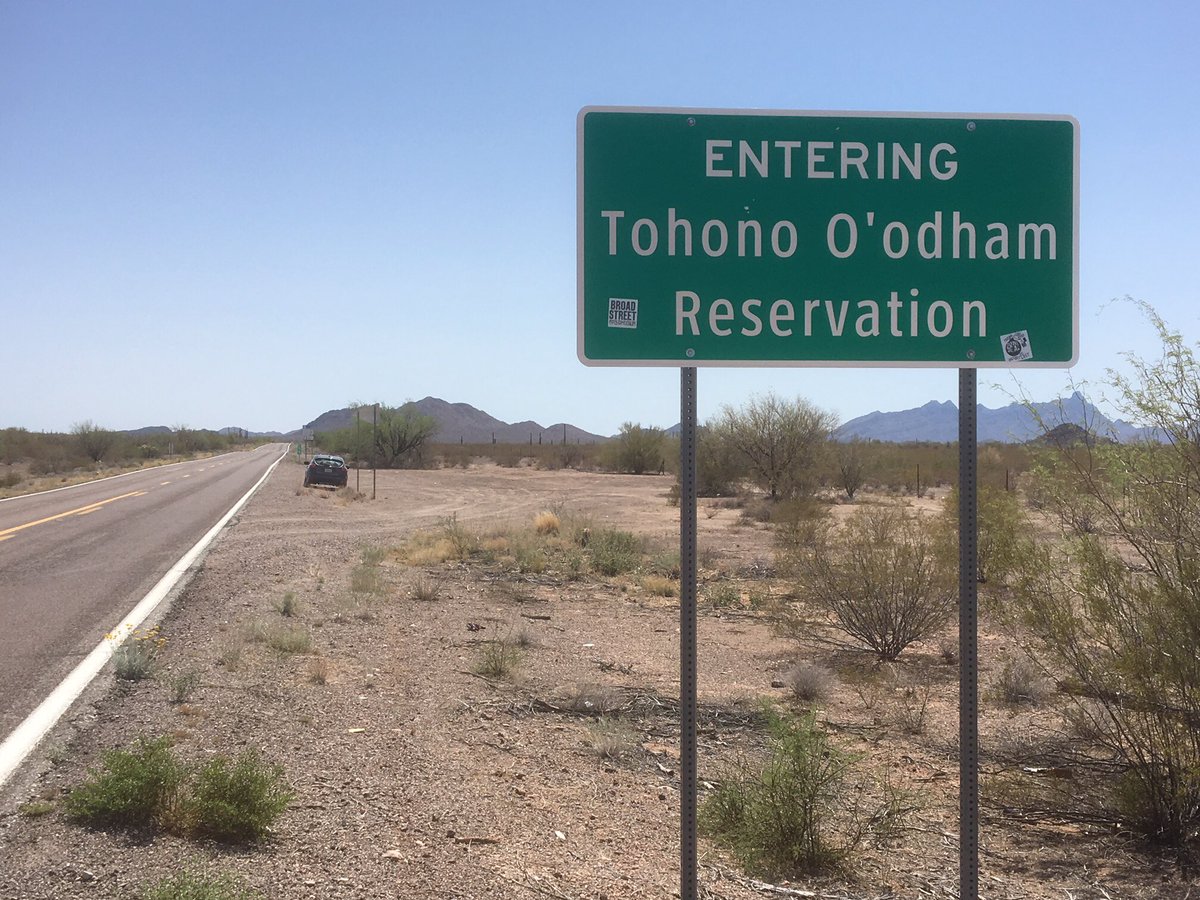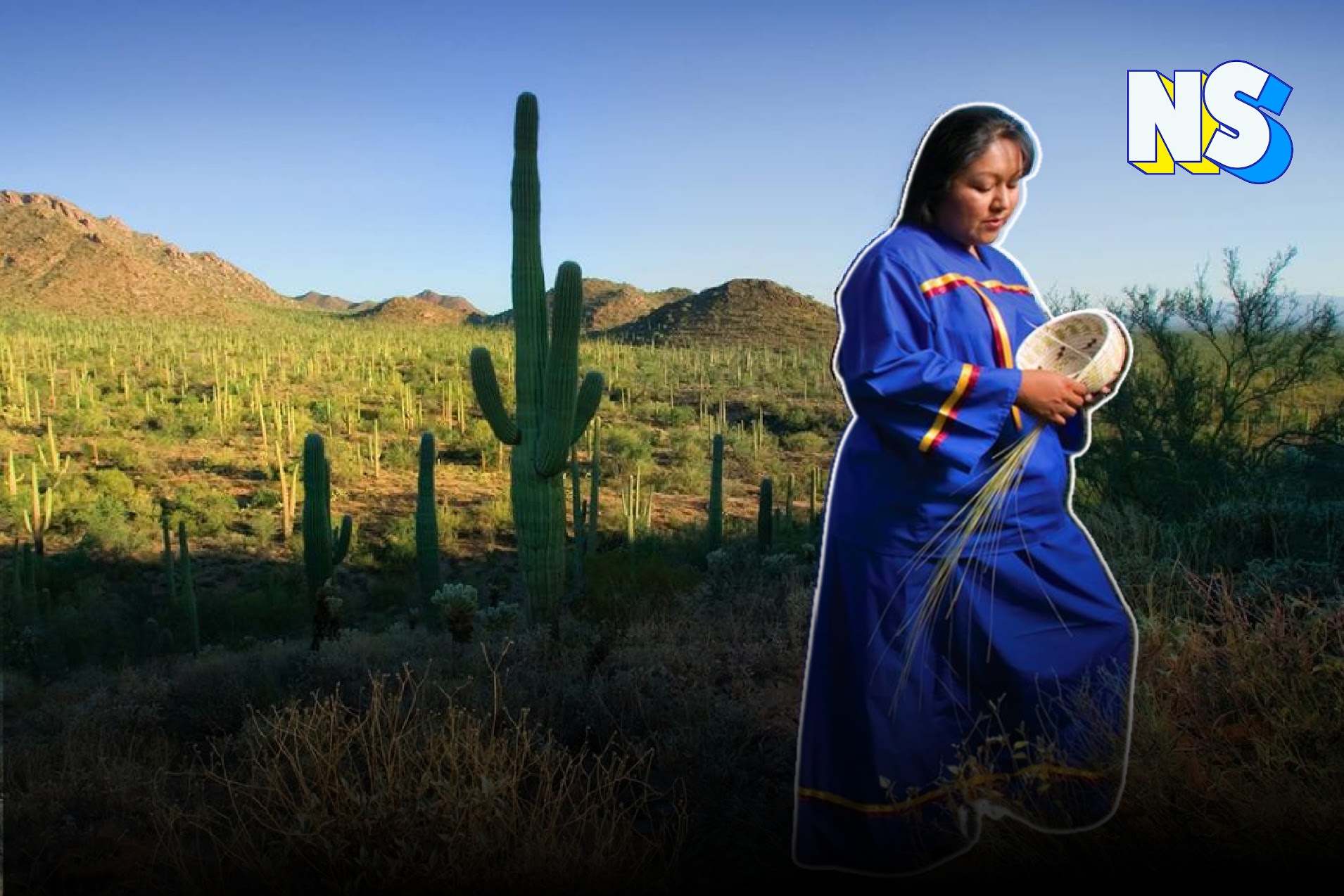Image courtesy of Nuestro Stories.
If you think the Mexico-U.S. border situation is messy, you should ask the Tohono O’odham Nation. This indigenous ethnic group is caught in one of the world’s strangest border controversies that illustrates what happens when politics and cultural boundaries collide.

As geography professors H.J. de Blij and Peter O. Muller note, physical boundaries cannot record – nor contain – everything that occurs in a territory when politics trump culture. For example, from a geographical perspective, culture goes beyond the boundaries of a region or a map as the exchange of information and capital is in constant movement.
This is precisely the challenge that indigenous communities such as the Tohono O’odham Nation face today.
Their original territories and land have been arbitrarily redesigned to fit modern forms of government. On the U.S. and Mexican side of the border, their culture, families, sacred sites, and agricultural areas have been divided with a clean, pencil-drawn line that fails to consider Tohono O’odham Nation’s identity.
Who Crossed Who’s Border?
Historically, the O’odham indigenous ethnic group lived in a vast land area in the American southwest, extending south to Sonora, Mexico, north to central Arizona, west to the Gulf of California, and east to the San Pedro River. Known as the Papagueria, this land had been home to the O’odham for thousands of years.

During the 16th century, the Spanish colonization of the area was done mainly through missionary expeditions. Two of the most prominent figures of these missions were Fray Marcos de Niza, an Italian missionary pursuing the Seven Cities of Gold, and his latter companion, Spanish conquistador Francisco Vásquez de Coronado.
In Sonora, the Mexican War of Independence put an end to the colonial era. Thus, with the independence of the Republic of Mexico (1810 -1821), the O’odham fell under Mexican rule. Yet, as a consequence of the Mexican – American War (1846 to 1848), Sonora lost 339,370 hectares of its territory to the U.S. through the Treaty of Guadalupe Hidalgo.
But, as if the division wasn’t harsh enough for the Tohono O’odham, 1853’s Treaty of La Mesilla (also known as Gadsden Purchase) divided O’odham land in half between the United States and Mexico, further separating the community.
A Four-Way Mess at the Border
Today, as a consequence of the land division, O’odham bands are broken up into four federally recognized tribes: the Tohono O’odham Nation, the Gila River Indian Community, the Ak-Chin Indian Community, and the Salt River (Pima Maricopa) Indian community.
In light of recent events, especially after September 11th, the U.S. has increased surveillance over its borders. The southern border has divided the O’odham people, causing them to present passports and border identification cards to enter the United States.

The U.S. Border Patrol has detained and deported the Tohono O’odham Nation members who were simply walking across their own land. They are a nation divided by subjective lines without consent.
Unjustly, this conflict is absent in the U.S. – Canada frontier, which allows all native people, American citizens, and Canadian citizens to freely travel between both countries due to 1794’s Jay Treaty.
The O’odham indigenous cultural identity is physically divided by an imaginary line preventing them from freely moving through their land. Their character cannot be contained within peremptory lines – and this is why human geographers and social scientists are developing Geographic Information Systems like this to map indigenous identities instead. Culture cannot be constrained; it is flexible, ever-changing, and learned.
https://nuestrostories.com/wp-content/uploads/2022/04/Edurne-Sosa-El-Fakih-Nuestro-Stories-Writer-Image.png
By Edurne Sosa El Fakih
Edurne Sosa El Fakih is a Venezuelan anthropologist-to-be and everlasting aspiring writer. With a passion for cultures, Edurne has conducted research in the Mexican highlands of Chiapas and is dedicated to sustainability and indigenous empowerment and agency. Edurne strives to give voice to the suppressed Latin American rural heritage in which she grew up through her writing, which has also inspired several short fiction stories published in different magazines throughout Latin America and Spain. Currently, she is finishing up her first novel and a compilation of short stories to be published this year. To see more of her writing, you can visit www.izkarralde.com or follow her on Instagram @izkarralde





